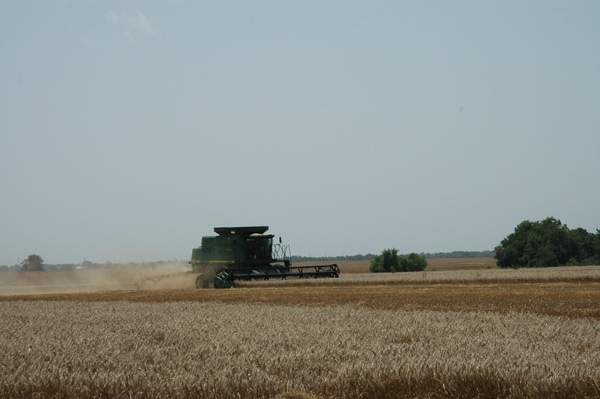September 8, 2014

Notice that the title includes “selling wheat” rather than “marketing wheat.” My opinion is that producers market their assets and sell what is produced. Farmers market land, labor, management, and capital (assets) through their crops (wheat, corn, sorghum, soybeans, cotton, etc.) they produce. They market land, labor, capital, and management through the crop(s) with the highest potential profit.
The 2014 government program may affect what crops are produced but should not affect how the crops are sold. Several risk management alternatives, mostly involving different types of crop insurance and revenue protection programs, are provided by the 2014 farm program. For information about crop insurance and program alternatives, contact the Oklahoma or Texas Cooperative Extension Service and/or your crop insurance agent.
For the latest on southwest agriculture, please check out Southwest Farm Press Daily and receive the latest news right to your inbox.
You should note that direct, CCC, or ACRE payments have been abolished. These payments have been replaced with Agriculture Risk Coverage (ARC) or Price Loss Coverage (PLC) with the option of adding Supplemental Coverage Option (SCO) to the crop insurance policy.
Wheat producers must sign up for revenue protection or yield protection crop insurance and select the Supplemental Coverage Option, if desired, by September 30, 2014. Crop insurance is purchased at a commercial crop insurance agency. Producers sign up for ARC and PLC at the USDA/FSA office.
The 2014 Government Program also gives producers the option to change the base acres to match their production practices. Changing the base acres is an option, not a requirement.
Before making decisions, check with several sources to make sure you understand all the intricacies and ramifications of the 2014 government program and crop insurance alternatives. Also remember that the 2014 government and crop insurance provisions are for revenue risk management purposes. The programs are not price enhancement alternatives.
The steps are:
Learn about government program alternatives;
Learn about crop insurance alternatives;
Learn how the government program and crop insurance alternatives are related and how they interact;
Learn how each one impacts your farming operation; and
Select the ones to use.
After the above decisions are made, the crops are selected, produced, and in the bin, selling begins.
The point is: selling is only part of the marketing process. Marketing is deciding how to maximize profits by allocating land, labor, capital, and management to cropping enterprises. Selecting which government programs and crop insurance policies to use is a different part of marketing than selling the crops. Actually, after wading through and making the government program and crop insurance decisions, selling the crop may be easy.
Depending on the person, selling crops can be easy or complicated. Research has shown that, in efficient markets, prices cannot be predicted. If this is the case, then the simplest (and sometimes the most efficient) method to sell a crop is to stagger sales over time.
Price patterns are available for producers to take advantage of. For example, in Oklahoma and the Texas Panhandle selling wheat between harvest and January 1 of the marketing year normally results in a higher net price than storing wheat into the next calendar year. Research also indicates that selling wheat at harvest nets the highest price over time.
Producers should not confuse marketing and selling. As the decision process appears overwhelming, remember:
There are no solutions with respect to the future, there are only choices between courses of action, each imperfect, each risky, each uncertain, and each requiring different efforts and involving different costs. But nothing can help the manager more than to realize what alternatives are available to him and what they imply. (Peter F. Drucker, Management: Tasks, Responsibilities, Practices, New York: Harper and Row, 1974, p. 515)
About the Author(s)
You May Also Like






